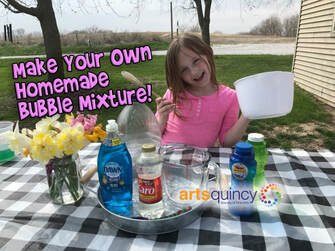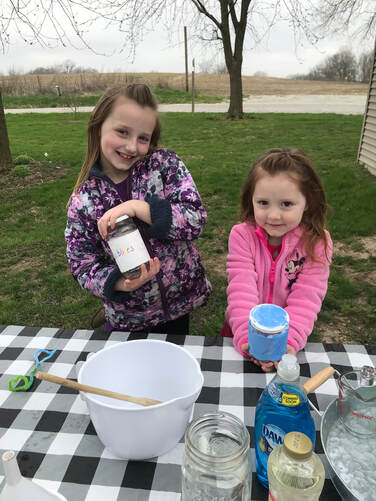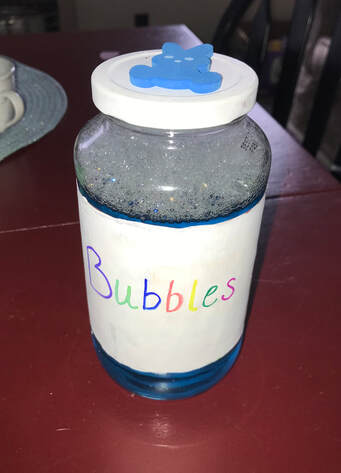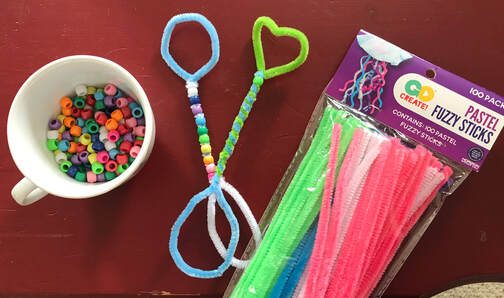 Children love blowing bubbles. Even older children enjoy getting in on bubble fun! Follow along as we give you step-by-step directions on how to make your own homemade bubble mixture. You’ll find additional resources to make a lesson plan for students of all ages at the end of this post!  Ingredients: 5 cups of water 2 cups of dish soap ¾ cup light corn syrup A gallon pitcher or large mixing bowl A mixing spoon A jar or other container to store the mixture Recipe: Poor the five cups of water into a gallon pitcher or large mixing bowl. Slowly add the two cups of dish soap and stir slowly so you do not form a lot of bubble film on top. Once it is mixed, slowly add the ¾ cup of light corn syrup and once again, stir it slow so bubbles do not form on top.  Now you can pour the mixture into another container to store the mixture like a jar. The recipe works best if it is allowed to sit overnight. You can also divide the recipe in half to conserve your ingredients. Note: Before we began the project, we first decorated our jars with paint, markers and puffy stickers. Fun Fact: Surface tension in bubbles The secret to making bubbles is surface tension. ... This is because the surface tension—the forces holding the molecules of a liquid together—of water is too high. When detergent is added to water, it lowers the surface tension so that bubbles can form.  Bubble wand: Materials: 2 Pipe cleaners Several Pony Beads Small bottle or round cylinder (about 1-2 inches in diameter) Directions: Take one pipe cleaner and wrap it around the cylinder so the two ends meet. Next, twist the two ends together, starting right next to the bottle so you have a strong circle end for your wand. Continue to twist the pipe cleaners down to the end for your handle and then slide it off the cylinder. Grab your second pipe cleaner and put beads on it, spacing about every quarter to half inch. Twist this pipe cleaner on the handle. Now you have a sturdy homemade bubble wand! Learn more: You can create your own science lesson on bubbles at home! Depending on the age of your students, you can use math and measurements to concoct the solution, create your bubble wand with pipe cleaners and test out different shapes and why bubbles are always a sphere. Older kids can do further research on how a bubble is made and understand its structure from molecules and surface tension. Videos: https://www.youtube.com/watch?v=4WZTzKu3CsY https://www.scienceworld.ca/resource/bubbles/ Reading: Visit your local library’s website for digital resources to read these books about bubbles. PreSchool/Early Elementary: Bubble Trouble by Margaret Mahy and Pop! A book About Bubbles by Kimberly Bradley. Upper Elementary: Lives of the Scientists by Kathleen Krull and The Ultimate Bubble Book by Shar Levine and Leslie Johnstone. Upper Elementary: What a Pro Knows: Bubble Science by Carly Schuna (Read with Highlights). High School/Adult: Fizzics: The Science of Bubbles, Droplets and Foams by F. Ronald Yump, The Science Book: Big Ideas, Simply Explained by DK, and Bubbles, Drops and Particles by R. Flift, J.R. Grace and M.E. Webster.
1 Comment
|
Archives
June 2024
Categories |

 RSS Feed
RSS Feed
